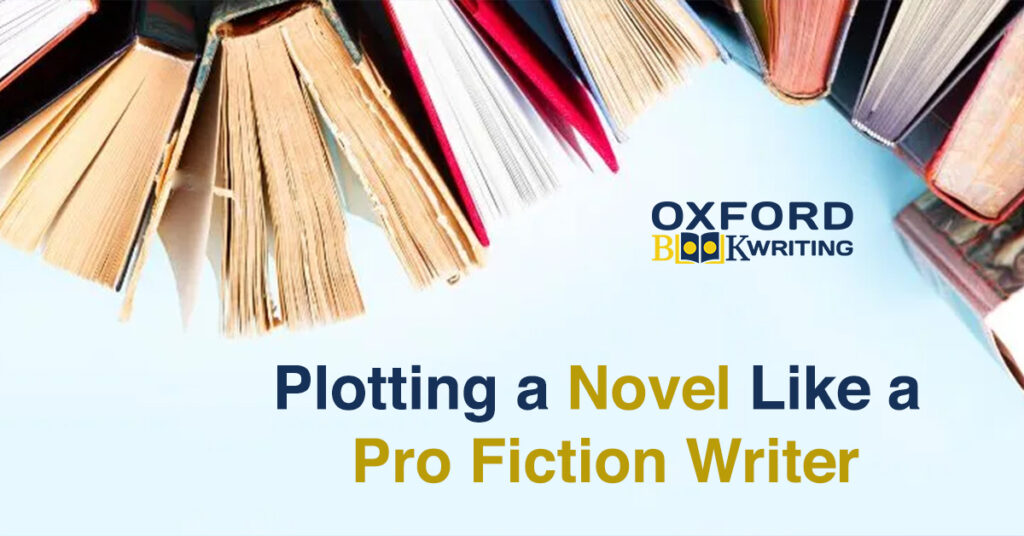Plotting your novel is an essential step in the book-writing process. Novice writers may assume that developing a book idea is enough to get started with writing the book, but this assumption is far from true. They only realize the importance of sitting down and noting their plot on paper or a device when they get deep into writing their book.
If you are trying to write your book after relying on the plot you have created in your mind, stop. This quest isn’t going to result in real results. Instead, develop a plot with a scientific template. Using a template allows you to stick to important notes without wandering around for minor details that may develop or change in the spur of the moment. At the same time, a template will help you during the writing phase when you will only need to scan it once to remember the whole premise of the scene you would be developing.
Here is everything you need to develop a perfect outline for your fiction book.
Typical Template for Plotting a Novel
A typical novel is built on characters, their motivation to take a certain path, their backstory, the problems they faced, and the solution they acquired or earned. Start developing the plot of your novel by defining these factors. Here are these elements in more detail.
Build Characters
Lay the foundation with these elements. Your novel will need characters to present the story and the background of the story to build the whole situation. You can go in as much detail about your character as you want. Deeply defined characters are mostly used in character-based plots, so you will want to limit the detail if you desire to give more prominence and influence to the plot.
Define Premise
At this step, you will also want to build the premise of the story. This will include the world it’s based on, the struggles and desires as well as social transactions of its characters. Every plot includes a conflict that comes to the surface after the writer has defined the premise.
Protagonist
When you define the premise, you define the building blocks of your protagonist’s personality. Take this time to also define the motivation of your main character. Here, note down the desires of your protagonist together with their struggles.
Introduce Conflict
This step will develop the middle part of your story. Here, you need to define what was the issue or conflict that disrupted the current course of events and escalated to prompt the main character to take action.
Crisis Development
Point out the events that converted this conflict into a crisis.
Crisis
Building on the story of conflict and its escalation, this part defines the crisis and how it impacted or changed your main character.
Resolution
This makes the last part of the novel and it focuses on how different factors come into play to resolve the crisis, how it developed your character, and what results emerged out of these solutions.
Developing the Plot
Development of events
Now we have defined the main elements that will go into your plot, the next step is to develop the events that will define these elements to the readers. Some writers use events to define the character, premise, or motivation of the main characters, but that’s not a rule of thumb. You can simply define these characteristics using descriptive sentences for the sake of brevity or any other reason that you want to uphold.
However, most plots use events to define the conflict from its appearance, escalation, crisis, and resolution. Your task is to think of all the events you want included in your novel. Don’t worry about their significance or secondary details. For now, you will be concerned about narrating these events. Remember to use the template outlined above to narrate these events as well. Start from the introduction of conflict, move through escalation and crisis, and end at resolution.
Development of Characters
Use these elements to define all the events you want included in your novel. You will also need to analyze these events or subplots in the context of the whole novel. How these events will lead to the climax? What are their impact on the development of your primary and secondary characters? Do these events align with the character definition you have outlined earlier?
Once you have developed your storyline as well as the subplots, you are good to start writing. While writing, you may feel a need to add more events or eliminate some from the plot you have developed. If you find yourself musing over the necessity of any subplot, consider how its elimination will impact the whole story and character arc of different characters.
Characteristics of an Effective Plot
The purpose of a plot is to help book writers with the book-writing process. These documents are also oftentimes the major facilitator between the book author and ghostwriters when you hire book writing services. This plot doesn’t need to be perfect. Also, it doesn’t require lots of details.
Plots should allow and facilitate the development of events in your story. If you explain too much in it, the writing process will be left with little to no room for creativity. At the same time, you don’t want to give more time to it than you would to actual writing. Make it quick and get over it as quickly as reasonable.
Finalizing Storyline
Once you have conceptualized your storyline, your first step towards writing it is building a plot. Jotting down all your ideas to develop a plot would have been a cumbersome exercise lacking focus and uniformity. A better way to do this is to use a template. This blog post shares the easiest template you need to build your plot easily and effectively. It requires you to think of your story in terms of its characters, their lives before the conflict, conflict, its peak, and resolution. Fill all these blanks for your plot and subplots and develop your storyline in less than a day.



